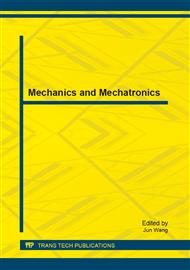[1]
Warpinski, N.R., Mayerhofer, M.J., Vincent, M.C., Cippolla, C.L., Lolon, E.P., Stimulating unconventional reservoirs: maximizing network growth while optimizing fracture conductivity. SPE Paper 114173 (2008) 10-12.
DOI: 10.2118/114173-ms
Google Scholar
[2]
Cipolla, C.L., Lolon, E.P., Erdle, J.C., Tathed, V., Modeling well performance in shale-gas reservoirs. SPE Paper 125532 (2009) 19-21.
DOI: 10.3997/2214-4609-pdb.170.spe125532
Google Scholar
[3]
Soliman, M.Y., East, L., Augustine, J., Fracturing design aimed at enhancing fracture complexity. SPE Paper 130043 (2010) 14-17.
DOI: 10.2118/130043-ms
Google Scholar
[4]
Mayerhofer, M.J., Lolon, E.P., Warpinski, N.R., Cipolla, C.L., Walser, D., Rightmire, C.M., What is stimulated reservoir volume (SRV)? SPE Paper 119890 (2008) 16-18.
DOI: 10.2118/119890-ms
Google Scholar
[5]
Cipolla, C.L., Warpinski, N.R., Mayerhofer, M.J., Lolon, E.P., Vincent, M.C., The relationship between fracture complexity, reservoir properties, and fracture treatment design. SPE Paper 115769 (2008) 21-24.
DOI: 10.2118/115769-ms
Google Scholar
[6]
Dahi-Taleghani, A., Olson, J.E., Numerical modeling of multi-stranded hydraulic fracture propagation: accounting for the interaction between induced and natural fractures. SPE Paper 124884 ( 2009) 4-7.
DOI: 10.2118/124884-ms
Google Scholar
[7]
Farayola, K.K., Oluokun, M.T., Adeniyi, V.O., Fakinlede, O.A., Hydrocarbon flow simulations in porous and permeable media using finite element analyses and discrete fracture network. SPE Paper 150772 (2011) 1-11.
DOI: 10.2118/150772-ms
Google Scholar
[8]
Gong, B., Qin, G., Yuan, S.Y., Detailed modeling of the complex fracture network of shale gas reservoirs. SPE Paper 142705 (2011) 1-9.
DOI: 10.2118/142705-ms
Google Scholar
[9]
Nagel, N.B., Lee, B., Gas shale-hydraulic fracturing: a numerical evaluation of the effect of geomechanical parameters. SPE Paper 152192 (2012) 6-8.
DOI: 10.2118/152192-ms
Google Scholar
[10]
Cheng, Y., Boundary element analysis of the stress distribution around multiple fractures: implications for the spacing of perforation clusters of hydraulically fractured horizontal wells. SPE Paper 125769 (2009) 23-25.
DOI: 10.2118/125769-ms
Google Scholar
[11]
Zhang, G.M., Liu, H., Zhang, J., Wu, H.A., Wang, X.X., Three-dimensional finite element simulation and parametric study for horizontal well hydraulic fracture. J. of Petroleum Sci. and Eng. 72 (2010) 310-317.
DOI: 10.1016/j.petrol.2010.03.032
Google Scholar
[12]
Fisher, M.P., Gross, M.R., Engelder, T., Greenfield, R.J., Finite-element analysis of the stress distribution around a pressurized crack in a layered elastic medium: implications for the spacing of fluid-driven joints in bedded sedimentary rock. Tectonophysics 247 (1994).
DOI: 10.1016/0040-1951(94)00200-s
Google Scholar
[13]
Shen, X.P., Cullick, A.S., Numerical modeling of fracture complexity with application to production stimulation. SPE Paper 151965 (2012) 6-8.
Google Scholar
[14]
Warpinski, N.R., Branagan, P.R., Altered-stress fracturing. J. of Petroleum Technology 41 (1989) 990-997.
DOI: 10.2118/17533-pa
Google Scholar
[15]
Soliman, M.Y., East, L., Adams, D., Geomechanics aspects of multiple fracturing of horizontal and vertical wells. SPE Paper 86992 (2004) 16-18.
DOI: 10.2118/86992-ms
Google Scholar
[16]
East, L., Soliman, M.Y., Augustine, J., Methods for enhancing far-field complexity in fracturing operations. SPE Paper 133380 (2010) 19-22.
DOI: 10.2118/133380-ms
Google Scholar
[17]
Camanho, P.P., Davila, C.G., Mixed-mode decohesion finite elements for the simulation of delamination in composite materials. NASA/TM-2002-211737 (2002) 1-42.
Google Scholar
[18]
Turon, A., Camanho, P.P., Costa, J., Davila, C.G., A damage model for the simulation of delamination in advanced composites under variable-model loading. Mech. Mater. 38 (2006) 1072-1089.
DOI: 10.1016/j.mechmat.2005.10.003
Google Scholar


